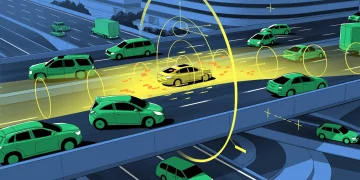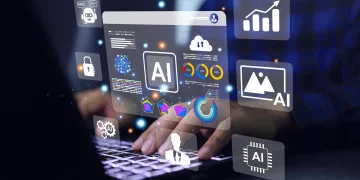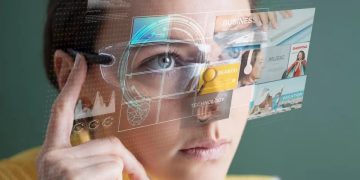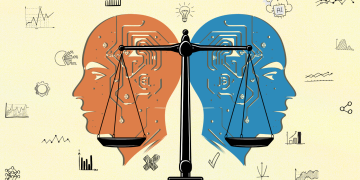Introduction:
In recent years, Virtual Reality (VR) and Augmented Reality (AR) have moved from the realm of science fiction into practical applications that are rapidly transforming the way consumers engage with products, services, and digital content. These technologies are not only changing entertainment and gaming but also making significant impacts on industries such as retail, education, healthcare, real estate, and more. As VR and AR continue to evolve and become more accessible, the way consumers interact with the world around them will be forever altered.
Virtual Reality (VR) immerses users in a fully digital environment, enabling them to experience an entirely computer-generated world through specialized headsets or other devices. Augmented Reality (AR), on the other hand, overlays digital content onto the real world, enhancing the user’s perception of their environment. Both technologies offer novel ways to interact with digital content, providing experiences that were once unimaginable.
This article will explore how VR and AR are set to redefine consumer experiences across various sectors and what the future holds for these transformative technologies.
1. The Rise of Virtual Reality and Augmented Reality
1.1. Virtual Reality: Immersive Experiences
Virtual Reality technology has gained significant traction over the last decade, thanks to improvements in hardware such as more affordable VR headsets, faster processors, and more advanced graphics. VR is primarily used for gaming, but its potential spans beyond entertainment.
- Immersive Gaming: VR creates a fully immersive experience that can transport users into entirely new worlds. Gamers can interact with their environment in a way that feels more natural and exciting, providing a deeper level of engagement than traditional gaming consoles or PC setups.
- Entertainment and Experiences: VR is also being used for virtual tourism, movie experiences, and interactive storytelling. Imagine traveling to a faraway country or walking through a historical event—these immersive VR experiences allow consumers to feel as though they are physically present, creating a sense of immediacy and emotional connection.
1.2. Augmented Reality: Blending the Virtual with Reality
While VR creates a completely artificial environment, Augmented Reality (AR) enhances the real world by overlaying digital objects, information, or visuals on top of a user’s view of their surroundings. Smartphones, smart glasses, and headsets are increasingly being used to deliver AR experiences to users.
- Retail and Shopping: AR allows consumers to “try before they buy” by visualizing products in their homes or on their person before making a purchase. For example, AR apps like IKEA Place allow users to see how furniture would look in their living rooms, while fashion apps let users try on clothes or makeup virtually.
- Social Media and Entertainment: Snapchat and Instagram are already popularizing AR filters that add virtual elements like face effects, animal ears, or virtual sunglasses, enhancing the fun and interactive aspect of social media.
- Navigation and Real-World Applications: AR can also enhance navigation by overlaying directional arrows or points of interest directly onto a user’s view of the world, making wayfinding more intuitive.
2. How VR and AR Are Transforming Consumer Experience
The adoption of VR and AR has profound implications for how consumers interact with brands, products, and services. These technologies are changing traditional consumer experiences in the following key ways:
2.1. Revolutionizing Shopping and E-Commerce
One of the most impactful changes VR and AR are bringing is to the retail and e-commerce sectors. With the help of these technologies, online shopping experiences are becoming more interactive and personalized.
- Virtual Showrooms: Retailers can create virtual showrooms where customers can browse and interact with products in a fully immersive environment. For instance, car dealerships can let potential buyers take virtual test drives or try out different car models and features from the comfort of their homes using VR.
- AR Try-Ons: AR allows consumers to see how products such as clothing, jewelry, or makeup will look on them before purchasing. Apps like Sephora’s Virtual Artist and L’Oreal’s AR app let users try on makeup virtually by using their phone cameras to superimpose products on their faces in real-time.
- Home Improvement and Furniture: AR technology, as seen with IKEA’s AR app, allows users to see how furniture will look in their own space by virtually placing it in their home through the screen of their smartphone. This helps consumers make more informed purchasing decisions and reduces uncertainty.
2.2. Enhancing Customer Service and Support
AR and VR are not just transforming the shopping experience but also improving customer service. Both technologies enable customers to receive assistance in ways that were not possible before:
- Virtual Customer Support: VR and AR offer opportunities for companies to provide virtual customer support that’s interactive and real-time. For instance, AR can be used for troubleshooting, where a customer wearing AR glasses or using their phone can view step-by-step instructions superimposed over a physical product to solve problems without needing to contact a representative.
- Training and Tutorials: Many businesses are using AR and VR for employee training in customer service roles. Through immersive simulations, workers can practice handling difficult situations, such as resolving customer complaints, before interacting with real customers.
2.3. Personalized and Interactive Advertising
Both VR and AR present exciting new opportunities for advertisers to create interactive and engaging ad campaigns:
- AR Ads: Brands can use AR to create ads that engage users directly. For example, L’Oréal and Pepsi have used AR to create fun, engaging campaigns where users interact with virtual products via their phones. These experiences can enhance brand recall and increase consumer engagement.
- VR Ads: VR has the potential to create immersive, branded experiences. Imagine experiencing a car commercial where you virtually test drive a vehicle or a destination ad that takes you on a virtual tour of a vacation spot. These types of immersive ads offer a much more engaging alternative to traditional TV or digital ads, leading to higher emotional connection and recall.
2.4. Changing Travel and Tourism
VR and AR can significantly change the way people experience travel and tourism, enhancing how they explore destinations and interact with different cultures:
- Virtual Tourism: VR offers the ability to visit far-off places without leaving home. Many museums and historical sites now offer VR tours that let users experience a destination or event as though they were there. Whether it’s visiting the Louvre in Paris or walking through the ancient streets of Rome, virtual tourism allows consumers to experience places and cultures without the cost or time required for travel.
- AR Navigation for Travelers: AR is also enhancing the experience of traveling by providing interactive, real-time navigation. For example, AR can be used in airports to display directions to gates or facilities through augmented overlays on users’ smartphones, making navigation easier and more intuitive.
2.5. Transforming Education and Learning
Education and learning are also undergoing a major transformation thanks to VR and AR technologies. These tools enable interactive learning experiences that were previously impossible:
- Immersive Learning: VR can place students in interactive environments where they can experience historical events, conduct virtual science experiments, or explore the human body in 3D. This level of immersion enhances understanding and retention of complex concepts.
- AR-Assisted Learning: AR enhances the traditional classroom by overlaying additional information on physical objects. For example, students can point a device at a biology textbook and see 3D models of cells or organs come to life. This makes learning more dynamic and engaging.

3. The Future of VR and AR in Consumer Experiences
As VR and AR technologies continue to evolve, their impact on consumer experience will only deepen. Here’s what we can expect in the future:
3.1. More Seamless Integration into Everyday Life
In the near future, VR and AR technologies are expected to become more seamlessly integrated into everyday life. AR glasses, for example, could replace smartphones, offering consumers a hands-free, immersive experience that blends the digital and physical worlds in real-time. These glasses will allow users to access information, interact with digital content, and communicate with others all while still being aware of their physical surroundings.
3.2. Wider Accessibility and Affordability
As VR and AR technologies continue to improve, the cost of accessing these experiences will decrease. What was once the domain of enthusiasts and tech-savvy individuals will become more widely accessible to the average consumer. VR headsets, which were once expensive and bulky, are becoming more affordable and lightweight, enabling broader adoption.
Additionally, AR is already being integrated into smartphones, which are ubiquitous in everyday life. The use of AR via mobile apps is expected to increase as mobile hardware continues to improve, making it easier for consumers to interact with AR content on a daily basis.
3.3. Enhanced Personalization through AI and Data
The future of VR and AR will be tightly coupled with artificial intelligence (AI), which will enable more personalized and adaptive experiences. AI can be used to analyze user behavior and preferences, delivering tailored content, product recommendations, and services. For instance, AR applications might become increasingly sophisticated, offering consumers individualized shopping experiences based on their previous interactions or preferences.
Conclusion:
Virtual Reality and Augmented Reality are set to completely redefine consumer experiences across multiple industries, from retail and entertainment to education and tourism. By offering more immersive, interactive, and personalized experiences, these technologies are transforming how consumers engage with brands, products, and services.
While there are still challenges to overcome—such as improving hardware, overcoming technical limitations, and ensuring widespread accessibility—the potential for VR and AR to revolutionize the consumer experience is enormous. As both technologies continue to mature and become more integrated into everyday life, we can expect to see increasingly sophisticated applications that enhance how we shop, learn, work, and entertain ourselves. Ultimately, VR and AR will play a key role in shaping the future of consumer interaction in the digital age.











































